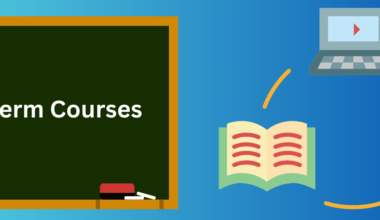Ready to make your mark in the world, student? Blogging is the perfect platform to share ideas and thoughts with the world!
Blogging is a powerful tool for students to express themselves and share their ideas with the world. It can help them develop their writing skills, improve their critical thinking, and build their online presence.
In this guide, we will take you through the process of starting a blog, from picking the right topic to making money from your blog. You will learn how to pick the right blog topic, choose the right blogging platform, select a domain name, purchase a web hosting plan, set up your blog and optimize it for search engines, promote your blog, make money blogging, and more.
In this blog post, we will explore a step-by-step guide to blogging.
1. Choosing a blogging platform
Choosing the right blogging platform is an important decision when starting a blog. There are many popular blogging platforms available, each with its own set of features and advantages. Here are some of the most popular blogging platforms:
- WordPress: WordPress is one of the most popular blogging platforms available. It is free and open-source, which means you can customize it to your liking. It is also very user-friendly and has a large community of users who can help you with any questions you may have.
- Blogger: Another well-known blogging platform that Google owns is Blogger. It is free and easy to use, making it a great choice for beginners. It also has a large community of users who can help you with any questions you may have.
- Tumblr: Tumblr is a microblogging platform that is great for sharing short-form content such as photos, videos, and GIFs. It is free and easy to use, making it a great choice for beginners.
Each of these platforms has its own set of features and advantages. WordPress is great for those who want complete control over their blog, while Blogger is great for those who want a simple and easy-to-use platform. Tumblr is great for those who want to share short-form content.
2. Defining Your Blog’s Niche and Audience
Picking what your blog will be about is a big deal. Here’s how you can decide:
- Figure out what you like. Start by thinking about what you enjoy. What topics do you like to read about or talk about with your friends? This is a good place to start for your blog.
- Check out the competition: Look at what other people are writing about in the same area. What are they talking about, and what are they not? This helps you find something unique for your blog.
- Think about your readers. Once you know what you want to write about, think about who will read it. What are their interests and problems? This helps you make content that people will want to read.
Here are some popular niche options and their potential audiences:
- Lifestyle: This covers lots of stuff like fashion, beauty, travel, and food. Anyone, no matter their age or gender, could be into this.
- Health and Wellness: If you’re into fitness, eating right, and mental health, this is for you. It’s for people who want to live a healthy life.
- Personal Finance: This is about money stuff like budgeting, saving, and investing. People who want to manage their money and build wealth would like this.
- Education: If you’re into study tips, career advice, and learning new things, this one’s for you. It’s for students and professionals who want to grow and learn.
When you pick a topic you like and that others are interested in, your blog can be a hit!
3. Creating engaging content
To make a great blog, you need awesome and unique stuff that keeps your readers interested. Here’s how to organize your blog posts:
- Catchy Headline: Start with a headline that grabs attention. Use strong words, numbers, or questions to get your readers hooked.
- Interesting Introduction: Your beginning should be cool and informative. Give a quick overview of what your blog post is about and why it matters.
- Subheadings for Easy Reading: Use subheadings to break up your writing. They make it simpler for readers to follow along. Make sure the subheadings say what each part is about.
- Bullet Points and Numbered Lists: Break down your ideas using bullets or numbers. It makes your content easy to scan and understand.
- Add Pictures and Videos: Use visuals like images or videos to make your blog more interesting. They help explain things in a simple way.
- End with a Call to Action: Finish your blog with something that makes readers want to join in. It could be a question asking for thoughts or suggesting more things to read.
Remember to always write with your readers in mind and provide value with every post you publish.
4. Promoting your blog
To make your blog really popular, you need to tell people about it in a smart way. Here’s how:
- Social Media: Put your blog posts on social media sites like Facebook, Twitter, and LinkedIn. Talk to your followers and answer their comments to make friends.
- Emails: Send updates about your blog to people who subscribe by email. Make the emails interesting so people stay excited.
Building a big presence on social media is key. Here’s how:
- Pick the Right Platforms: Use social media that fits your blog and the people you want to reach. If you’re aiming for younger folks, Instagram and TikTok could be great.
- Post Regularly: Keep posting on social media so your followers stay interested.
- Talk to Your Followers: Answer comments and messages. It helps you become friends with your followers.
And, if you want more people to find your blog, try these tricks:
- Use Good Keywords: Find important words related to your blog and use them naturally in your writing.
- Link to Good Sites: Put links in your blog to other cool websites. It can help your blog show up more in search engines.
- Make your content great: Use clear headings, lists, and pictures. It makes your blog better for readers and for search engines.
Follow these tips, and your blog will get lots of attention!
5. Analyze blog performance.
Analyzing blog performance is an essential part of refining your content strategy. By tracking blog statistics, you can gain valuable insights into your readers’ behavior and preferences, which can help you create more engaging content. Here are some tools and techniques for tracking blog performance and analytics:
- Google Analytics: Google Analytics is a free tool that provides detailed information about your website’s traffic and user behavior. It can help you track metrics such as page views, bounce rate, time on site, and more.
- SEMrush: SEMrush is a paid tool that provides detailed information about your website’s search engine rankings, backlinks, and more. It can help you track your website’s visibility and identify opportunities for improvement.
Once you have collected data on your blog’s performance, it’s important to interpret the data and make informed decisions based on the insights you gain.
6. Monetizing Your Blog
Want to make money from your blog? Here’s how:
- Create good content: Advertisers like blogs with great content. Write stuff that’s helpful and interesting.
- Get Social: Be big on social media, where your audience hangs out. It makes advertisers notice you.
- Be honest: Tell your readers if you’re promoting something for money. Only talk about stuff you really believe in.
- Find Partners: Look for companies that fit your blog. Tell them what you can offer and what you want from them.
- Negotiate Fairly: Talk about the terms with your partners. Make sure it’s a good deal for both of you.
Conclusion
Starting a blog is a fun journey for students. We’ve covered the basics, from picking the right platform to choosing what you love to write about. Remember, good blogs need good writing and telling people about them.
As you start, keep practicing and talk to your readers. Blogging is fun and lets you be creative while connecting with others. And if you’re thinking about an MBA course, check out the best MBA college in Ghaziabad. Your blog can be a way to share your educational journey and connect with people.






